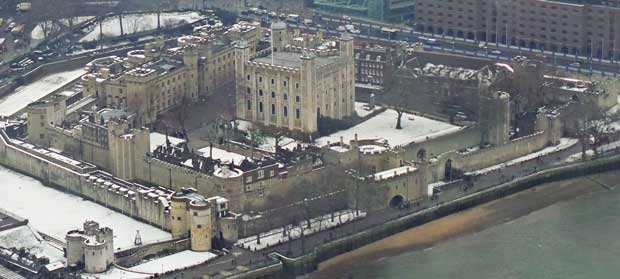
The Tower of London has dominated the London skyline and the pages of English history ever since it was constructed by William the Conqueror in the wake of his Norman invasion of 1066.
Having beaten and killed the last Anglo Saxon King of England, Harold, at the Battle of Hastings, William moved swiftly to consolidate his grip on his newly conquered dominion. He had invaded a country of 2 to 3 million people with a force of only 10,000 men and speed was of the essence.
He understood that, to gain full control of England, he would first have to gain control of the City of London, the financial powerhouse of trade that held the purse strings of the nation.
William realised that trying to take the well fortified City by force would be a costly and probably futile endeavour. It would, he reasoned, be far better to come to terms with the City fathers.
And so he offered them a deal. If they would accept him as King of England he would grant their City certain rights that would effectively make it a state within a state.
The City fathers realised that resisting a Norman siege would be costly and possibly futile so they accepted the terms and, on Christmas day 1066, William of Normandy was crowned King William 1st of England in Westminster Abbey.
Having achieved his goal, William then set about securing his Kingdom and ordered a castle building programme, part of which involved building nine Castles that encircled London.
And, on a huge mound at the City's eastern fringe, he ordered the construction of a mighty stone fortress that would become the Tower of London.
Imagine the psychological impact this had on the citizens of London as they looked up from the narrow streets of their city of tiny, timber-framed houses of wattle and daub and the huge impregnable structure looming ominously over them.
This was very much a statement of intent from their new masters telling the citizens of London in no uncertain terms that they were now a conquered people. The fact the Tower was built in stone sent out clear signal that the Normans were here to stay.
Over succeeding centuries that initial structure was added to with the result that what we now call The Tower of London is, in fact, a vast complex consisting of 22 separate towers.
However, there have been three main building phases in its history and it is possible to trace those phases with your eyes from outside the walls of the Tower of London.
The massive tower at the centre of the complex, capped with grey turrets and a flag pole, is the White Tower. This was the Tower built by William the Conqueror around 1078 and so named because in those days, the Middle Ages, it would have been whitewashed to give it a shining, gleaming and imposing appearance.
In the 1200′s, another of our medieval kings, Henry III, who ruled for well over 50 years, built the first major extension to the Tower, and the limits of that extension is the middle wall that has the white drain pipes.
The final enlargement took place in, or around, the year 1300 under the command of King Edward I one of our great warrior kings whose reign lasted from 1272 to 1307. The extent of his expansion is marked by the outer wall of the complex that has black drain pipes.
Edward also added the moat which was drained in the 19th century when its water became horribly polluted. Filled with water, the moat would have made it impossible for would be attackers to get close enough to undermine the walls of the complex. It also provided a useful food source in that fish could be taken from its waters. Additionally it was used as a means of disposing of rotten food and sewerage, which possibly led to the arrival of some of the Tower's most famous residents, the ravens.
The Tower of London has been many things in its lifetime.
It always was - and still remains - a Royal Palace. It was once home to the Royal Mint where the coins of the realm were produced or minted. Until the 19th century it housed the Royal Menagerie or zoo in the Lion Tower, a now vanished tower that stood where the Tower gift shop stands today.
But the Tower is best known the world over as a place of imprisonment torture and executions, and the names of those who have ebbed out their final days, or even hours, behind those imposing walls reads like a who's who of English history. Sir Walter Raleigh, the little princes, Edward and Richard, Guy Fawkes, Lady Jane Grey, Henry V111′s wives Anne Boleyn and Catherine Howard are just a few of those who entered this imposing fortress and never came out.